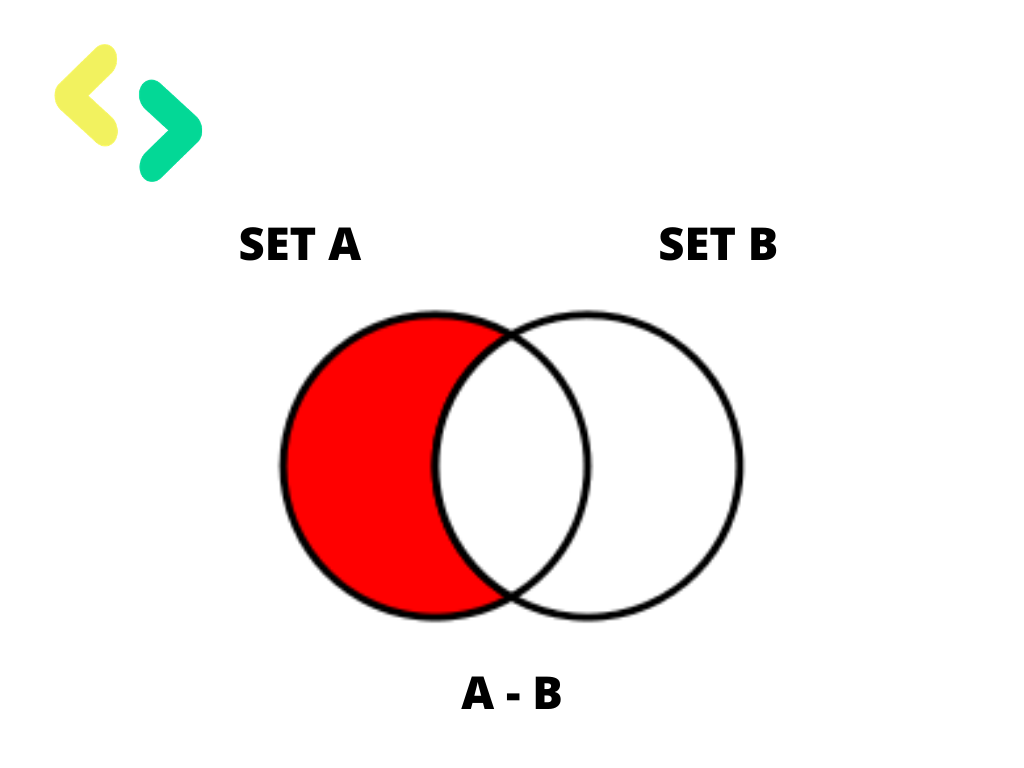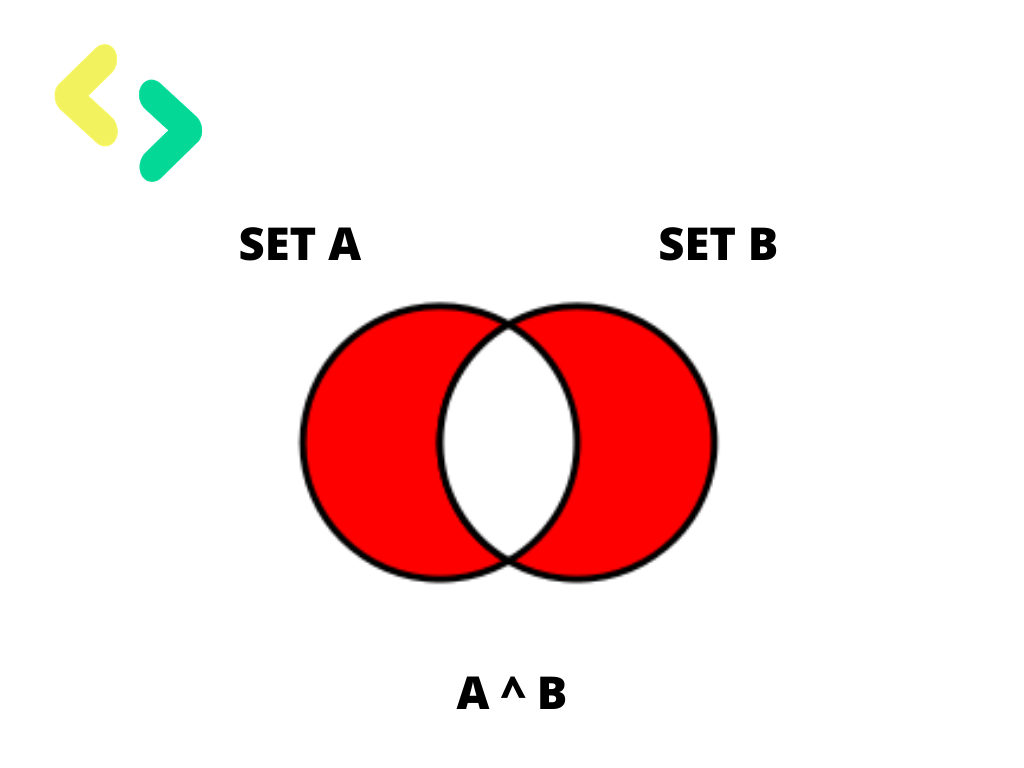Set{}
A set is another type of collection data type. A Set is a mutable and unordered collection of elements without duplicates. That means the elements within a set cannot be repeated.
A set is created by placing all the elements separated by a comma within a pair of curly brackets { }.
Syntax of set:
variable={element1,element2,element3}
Set Operations
As you learned in mathematics, python has also supported the set operations such as
- Union
- Intersection
- Difference
- Symmetric difference
Union ( | )
The union includes all elements in two or more sets. That is all element in the given set is returned without duplicate.
In python, the operator | is used to the union of two sets. The function union( ) is also used
to join two sets in python.

Example 1:
- >>>SET_A = {1,2,3,4,5}
- >>>SET_B = {5,6,7,8,9,10}
- >>>print(SET_A | SET_B)
- {1,2,3,4,5,6,7,8,9,10}
Example 2:
- >>>SET_A = {1,2,3,4,5}
- >>>SET_B = {6,7,8,9,10}
- >>>print(SET_A.union(SET_B))
- {1,2,3,4,5,6,7,8,9,10}
Intersection ( & )
Intersection includes the common elements in two sets. That is, it returns the same element in the given sets.
The operator & is used to intersect two sets in python. The function intersection( ) is also used to intersect two sets in python.

Example 1:
- >>>SET_A = {1,2,3}
- >>>SET_B = {2,3,4,5}
- >>>print(SET_A & SET_B)
- {2,3}
Example 2:
- >>>SET_A = {1,2,3}
- >>>SET_B = {2,3,4,5}
- >>>print(SET_A.intersection(SET_B))
- {2,3}
Difference ( – )
The difference includes all elements that are in the first set (SET_A) but not in the second set (SET_B). It returns an element in the first set, that element not in the second one.
The minus (-) operator is used to difference set operation in python. The function difference( ) is also used to difference operation.

Example 1:
- >>>SET_A = {1,2,3}
- >>>SET_B = {2,3,4,5}
- >>>print(SET_A – SET_B)
- {1}
Example 2:
- >>>SET_A = {1,2,3}
- >>>SET_B = {1,2,3}
- >>>print(SET_A.difference(SET_B))
- set()
Symmetric Difference (^)
It includes all the elements that are in two sets but not the one that is common to two sets.
The caret (^) operator is used for symmetric difference set operation in python. The function symmetric_difference( ) is also used to do the same operation.

Example 1:
- >>>SET_A = {1,2,3}
- >>>SET_B = {2,3,4,5}
- >>>print(SET_A ^ SET_B)
- {1,4,5}
Example 2:
- >>>SET_A = {‘A’,2,3}
- >>>SET_B = {1,2,3}
- >>>print(SET_A.symmetric_difference(SET_B))
- {‘A’,1}
My Previous Post
Accessing index and value in Tuples: https://iterathon.tech//accessing-index-and-value-in-tuples-python/
LEARN LITTLE BY LITTLE TO CHANGE THE TECH WORLD

